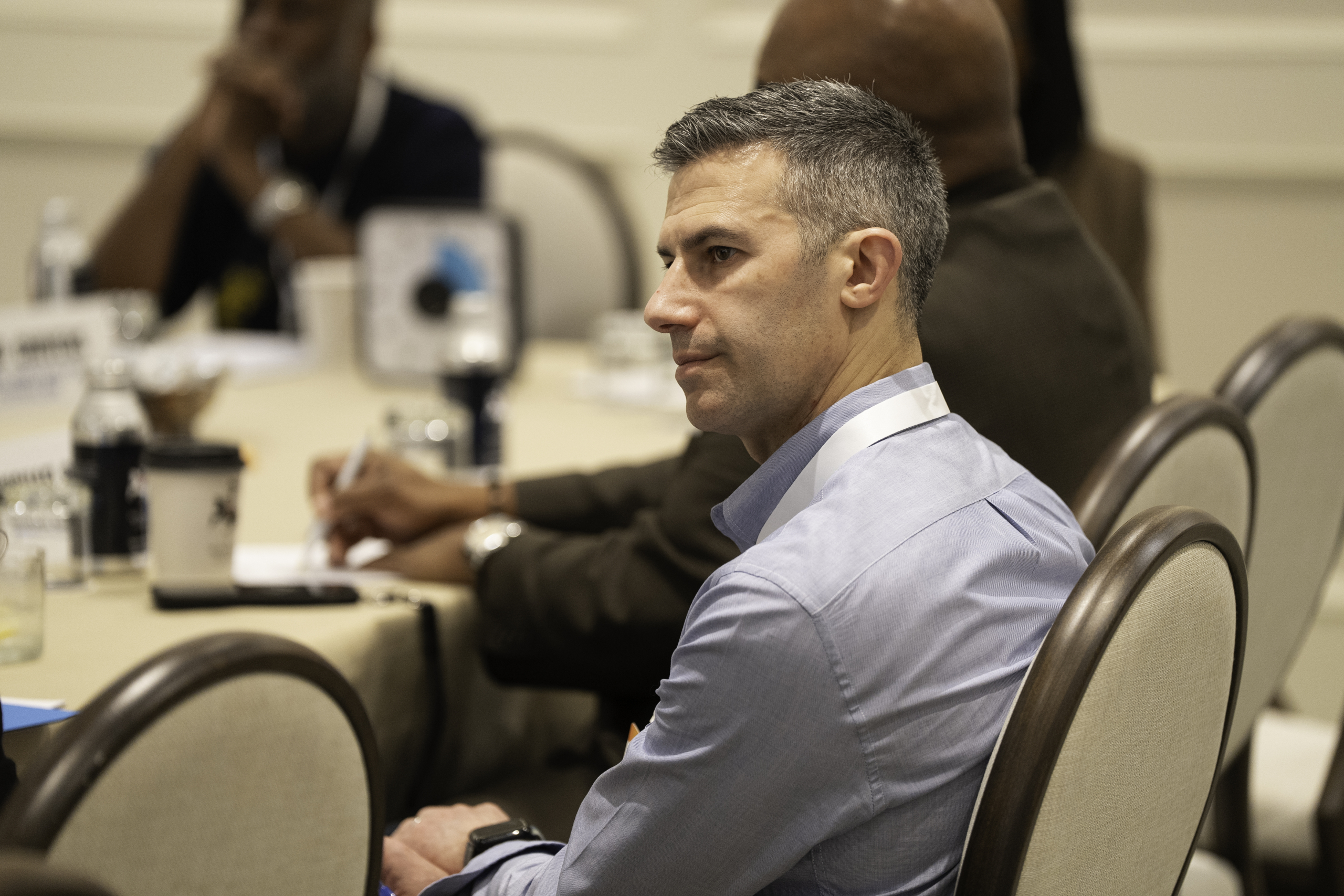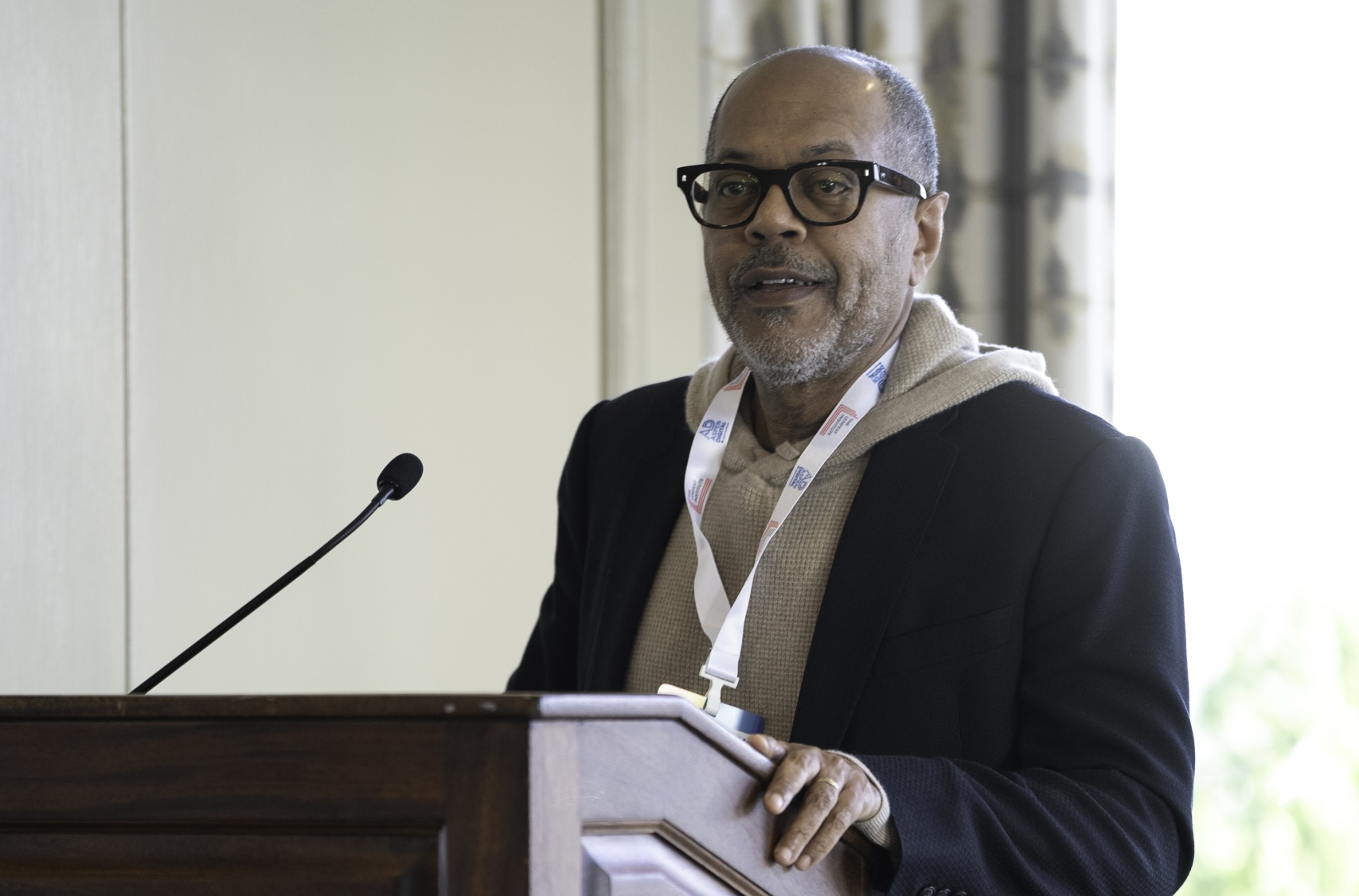Jeremy Gilbert, Professor at Northwestern University’s Medill School of Journalism, at the 2025 Local News Summit.
This essay was originally published in the Columbia Journalism Review.
The front page of Ben Franklin’s 1730s newspaper, the Pennsylvania Gazette, looks all too similar to newspaper websites of today. The products of local newsrooms have not evolved rapidly enough to keep up with news consumers’ expectations—younger ones in particular.
The Next Gen News project interviewed forty-five young news consumers (eighteen to twenty-four years old) and found a major gap between how these younger news consumers seek information and what is being supplied by legacy news providers. Despite Medill’s 2024 “State of Local News” report showing that the “loss of local newspapers is continuing at an alarming pace,” young news consumers feel overwhelmed by the volume of news and information they face.
The products of local newsrooms have not evolved rapidly enough to keep up with news consumers’ expectations—younger ones in particular.
Furthermore, what local news consumers are looking for doesn’t match up with the motivations of many trained journalists. Many journalists see their role as a watchdog for the government, giving voice to the unheard and dealing with misinformation, according to a 2022 Pew Research Center study. Unfortunately, Medill’s survey, “How the Chicago area gets its news,” suggests that personal issues like health and money management are the primary reasons for news consumption. Worse still, the survey indicates that only 8 percent of those surveyed consumed news because it is “enjoyable or entertaining.”
Facing a flood of potential news and information, Next Gen News found, young news consumers take breaks from the news, delete apps, or otherwise protect their mental health by changing their news mix. Most of these young news consumers dedicate much, sometimes most, of their news consumption time choosing what to watch, read, or listen to. Once they engage, they move to one of four other modes of consumption:
- Substantiate
- Study
- Socialize
- Sensemake
Most of those modes speak to something young news consumers are missing. They need more background about the issues; they want to explore primary sources for themselves and know what action to take about the problems that affect their world.
Legacy news organizations need to make changes. The behaviors of these young people are a harbinger of the changing consumer tastes.
Legacy news organizations need to make changes. The behaviors of these young people are a harbinger of the changing consumer tastes. News organizations must mimic popular social formats, entwine content with social media experiences, and create paths to transition from social to direct channels. They must build audience affinity by embracing younger and more diverse creators—perhaps by elevating existing staff members. They need to modernize the language of news, making it more accessible and colloquial. And they must find ways to empower their audiences, giving them paths to take action.
Ryan Hall, the self-described “Internet’s Weatherman,” posts weather/storm videos on YouTube and TikTok. His audience wanted to help survivors of severe weather events, so he launched the Y’All Squad, a nonprofit that claims to have raised hundreds of thousands of dollars.
Most of all, legacy news organizations need to remember that news consumers choose where they get news from; it’s not incumbent on news consumers to come to legacy publishers. Consumers are increasingly choosing social platforms. This is not the first time publishers have struggled with new distribution, but we cannot dismiss consumer preference as foolish or frightening—as we have done so often in the past. Here’s what opinion leaders had to say about a few earlier technological innovations:
- 1929: “[It] delivers only pap—brainless diversions that erode listeners’ ability to think, inquire, and judge,” from “Radio: A Blessing or a Curse?” by Jack Woodford, The Forum.
- 2005: “[It] is a recipe for muddled thinking and poor performance,” from “Emails ‘pose threat to IQ’” by Martin Wainwright, The Guardian.
- 2006: “[It] is [an] online fetish site for foolish collectivism,” from “Wikipedia Is Digital Maoism” by Jaron Lanier, Edge.
Most of all, legacy news organizations need to remember that news consumers choose where they get news from; it’s not incumbent on news consumers to come to legacy publishers.
As we think about how to embrace the next generation of news consumers and creators, we must:
- Remember that news should come from someone you “know.”
- Give our audience a sense that they can “do something” about the issues we report.
- Ensure that news does not sound like something Ben Franklin would recognize.
The views represented herein are those of the author(s) and do not necessarily reflect the views of the Aspen Institute, its programs, staff, volunteers, participants, or its trustees.
Dive Deeper
Read more news leaders’ essays.
We Don’t Know Our Country Well Enough
Former LA Times Executive Editor Kevin Merida speaks on the need to build trust through robust local and community-centric reporting.
We Are Playing Defense
Journalism Protection Initiative Director Joel Simon outlines the threats journalists are facing and shares a strategy for playing defense.




